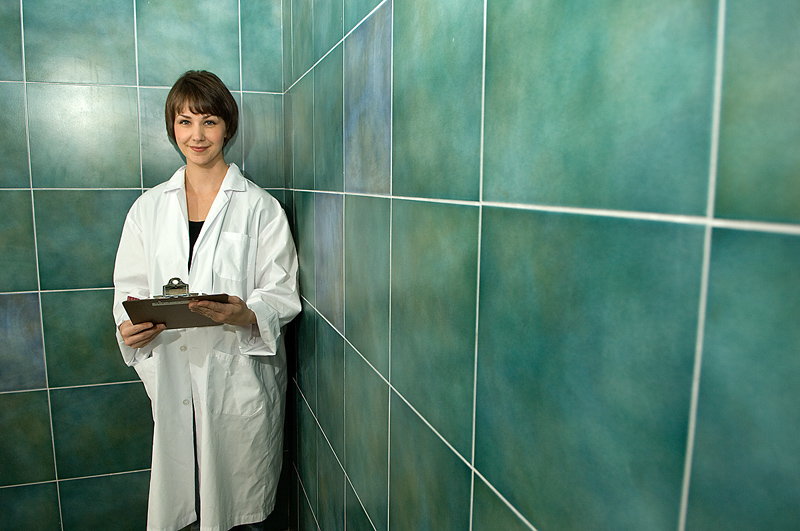
WEDNESDAY, March 26, 2014 (HealthDay News) — About one of every 25 U.S. hospital patients contracts an infection during their stay, and doctors can’t say for certain why half those infections occur, according to a new study by the U.S. Centers for Disease Control and Prevention.
Researchers estimate that in 2011 about 648,000 Americans developed an infection while hospitalized, or about 4 percent of all inpatients. About 75,000 of those patients died while in the hospital.
About half of the infections resulted from surgery or through use of a medical device such as a ventilator or a catheter, the study reports. These causes of hospital infection are well known and efforts are underway to combat them.
The other half are infections with no clear cause, researchers said.
“This finding should expand the public health focus to include these other types of infections, identifying patients at risk and developing effective prevention measures,” the study’s authors conclude.
For example, pneumonia is the most common infection associated with a hospital stay, the new study reports, accounting for about 22 percent of all health care-related infections.
But only half of those hospital pneumonia cases could be linked to a patient placed on a ventilator, said Dr. Mike Bell, deputy director of the CDC’s division of healthcare quality promotion. Ventilator-associated pneumonia is a common occurrence with a known set of recommended steps that can be taken to prevent its spread.
“That tells me these pneumonias happening outside the ICU need to be investigated,” he said. “This study points us toward the things we need to tackle next.”
Besides pneumonia, other common infections that occur in hospitals include surgical site infections (22 percent), gastrointestinal infections (17 percent), urinary tract infections (13 percent) and bloodstream infections (10 percent), according to the CDC report published in the March 27 New England Journal of Medicine.
Clostridium difficile is the most common germ spread during a hospital stay, accounting for 12 percent of all infections, the study found. About seven of 10 gastrointestinal infections in the hospital involve C. difficile.
C. difficile can cause deadly diarrhea and results from antibiotic overuse. The germ infests a person’s colon after antibiotics have wiped out the healthy bacteria that normally resides in their gut.
“This is not just the nuisance diarrhea it used to be 12 years ago,” Bell said, noting that the germ produces a toxin that has grown more powerful over time. “That toxin chews up the colon to such an extent that people have to have their colons removed to save their lives.”
These other germs most commonly spread in hospitals all have strains that are antibiotic resistant:
- Staphylococcus aureus, including MRSA (11 percent)
- Klebsiella (10 percent)
- E. coli (9 percent)
- Enterococcus (9 percent)
The fight to halt the spread of antibiotic-resistant germs continues to be a top priority for U.S. hospitals, said Nancy Foster, vice president of quality and patient safety policy for the American Hospital Association (AHA).
“It’s a very complex and challenging clinical area, but one that doctors and nurses and pharmacists are passionate about getting their hands around because we can see how devastating it can be for patients,” Foster said.
The new study resulted from the CDC’s multistate survey of infections associated with health care. The survey used 2011 data from 183 U.S. hospitals to estimate the burden of a wide range of infections in hospital patients across the country.
Researchers already are taking steps to track down the unknown causes of hospital infections, CDC’s Bell said.
For example, many of the pneumonia cases not caused by ventilation could occur due to aspiration, with the patient breathing in germs in their own saliva or regurgitation.
“If we find that a lot of this is aspiration, that’s a big deal,” he said, noting that cutting back on the use of sedatives could cut back on aspiration and, as a result, the number of pneumonia cases. “That sort of thing we can tackle with a coordinated effort.”
Hospitals are investigating other sources of infection, including the spread of disease back and forth between hospitals and care facilities, AHA’s Foster said.
Experts also are considering germs that might be introduced by families and friends visiting loved ones, and the possibility that common physician items such as stethoscopes and white coats might carry bugs from patient to patient.
“There are a lot of good ideas out there, but we find in each hospital the sources of infection are different, so the strategies that will work for them may be different as well,” Foster said.
Patients can help themselves avoid infection while hospitalized by asking lots of questions, Bell suggested.
They can ask what’s being done to prevent them from contracting C. difficile or having a surgical site infection. They also can ask every day if they can have their catheter removed, since the device increases their infection risk.
Even better, patients can get a loved one to ask these questions for them, as well as requiring anyone who enters the room — even hospital staff — to wash their hands.
“It’s not very realistic to expect a sick person to deal with all of this. It really helps a lot to have a friend or family member with you and be tasked with some of these things,” Bell said.
More information
For more about infections associated with health care, visit the U.S. Centers for Disease Control and Prevention.
Copyright © 2025 HealthDay. All rights reserved.

